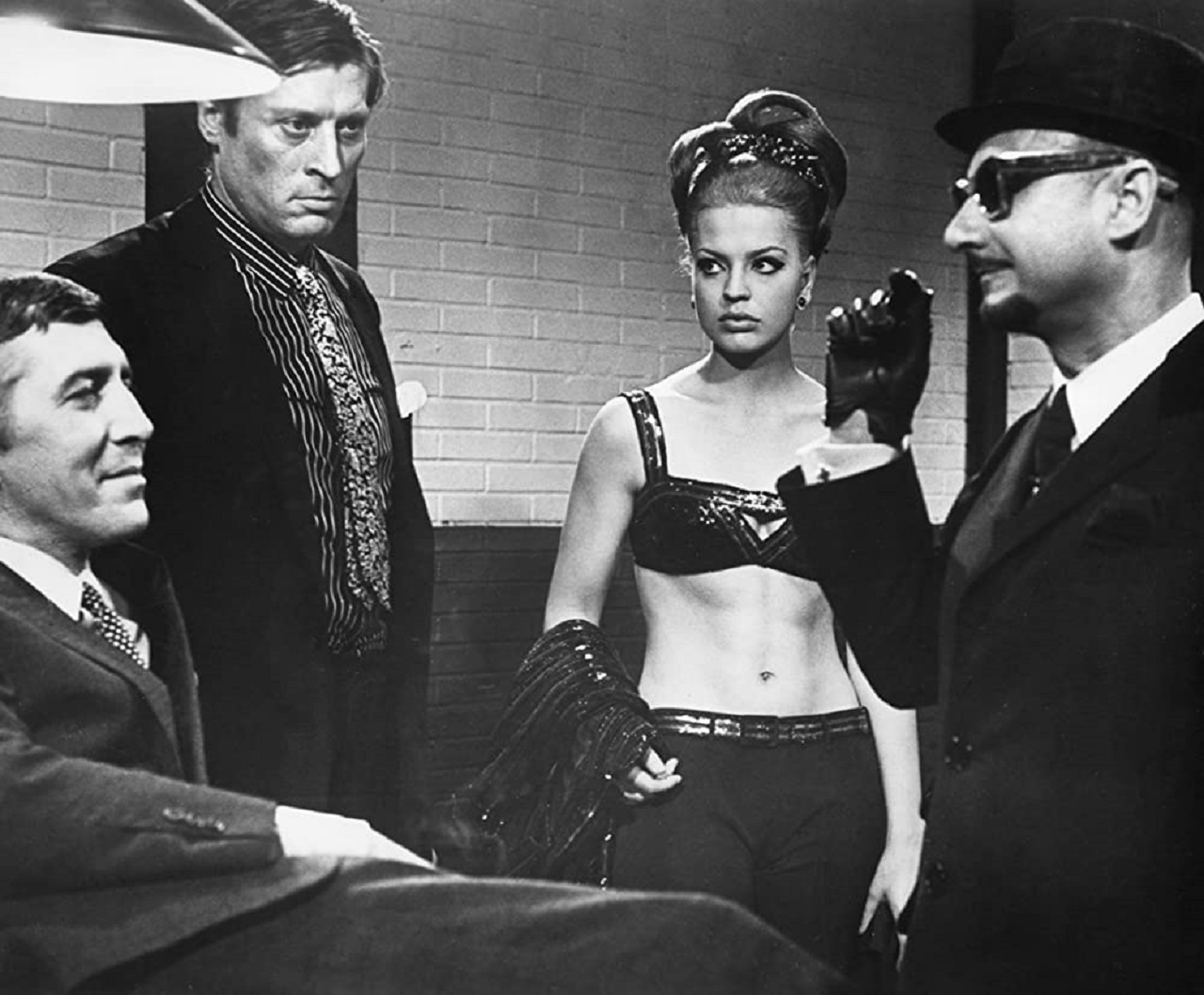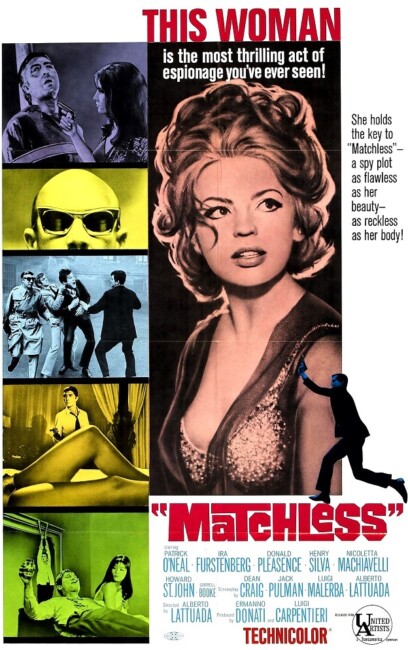Italy. 1967.
Crew
Director – Alberto Lattuada, Screenplay – Dean Craig, Alberto Lattuada, Luigi Malerba & Jack Pulman, Story – Ermano Donati, Dialogue – Jack Pulman, Producers – Luigi Carpentieri & Ermano Donati, Photography – Sandro D’Eva, Music – Ennio Morricone, Special Effects – Guy Delecluse, Art Direction – Vincenzo Del Prato. Production Company – Dino de Laurentiis Cinematografica.
Cast
Patrick O’Neal (Perry Liston), Ira Furstenberg (Arabella), Donald Pleasence (Gregor Andreanu), Henry Silva (Hank Norris), Nicoletta Machiavelli (Tipsy), Howard St. John (General Shapiro), Elisabeth Wu (O-Lan), Handy Ho (General O-Chin)
Plot
Perry Liston is a former soldier who works as a reporter for The New York Tribune, where he writes a column under the name Matchless. He is in China to write an article but has been captured by the government, accused of being a spy. His cellmate is an aging Chinese man who gives Perry a ring telling him that it confers invisibility but only for twenty minutes every ten hours. Perry is taken away to be shot but uses the ring to become invisible and make an escape. He charms the Chinese girl O-Lan and gets her to fly him back to the US. Perry is then recruited by the US government who want his help in going to London to deal with Gregor Andreanu, a businessman who has an all-powerful liquid and designs on world domination.
Spy Movies were all the in-thing in the 1960s following the huge hits of the James Bond films. The success of these led to a series of imitators, which headed for the giddily psychedelic and campy as though in an attempt to become more ridiculous than the other. A good many of these imitators came from France and Italy, something that gained them the nickname ‘Euro Spy Films’. Matchless was an Italian-made production, although it was shot in English and imports a number of English-language actors.
Matchless was produced by Dino de Laurentiis, one of the legendary movie moguls of this era. Around the same time, de Laurentiis made other works such as The Bible In the Beginning (1966), Danger Diabolik (1967) and Barbarella (1968), as well as one other spy film with Kiss the Girls and Make Them Die (1968). A few years later, de Laurentiis moved to the US and produced the remakes of King Kong (1976) and Flash Gordon (1980), as well as several Stephen King adaptations, Dune (1984) and the first Hannibal Lecter film Manhunter (1986), among many others.
A great many of these Bond copies of this period took themselves unseriously and entered into a campy silliness. To its credit, Matchless does take itself seriously. It also comes with a strange gimmick – namely, a ring that makes Patrick O’Neal invisible for twenty minutes every ten hours. It is given to him by an elderly Chinese man he meets in jail and much of the film centres around the complications caused by the ring and its limitations. This makes Matchless into essentially a spy movie variant on Universal’s The Invisible Man (1933) and sequels – indeed, Universal had themselves conducted an invisible spy film with one of their sequels, Invisible Agent (1942). We also get an invisibly aided boxing match, which recalls something of the final film in the Universal series Abbott and Costello Meet the Invisible Man (1951).

The invisible ring also makes Matchless one of the few spy films to have a fantasy premise. We do get one or two other vaguely science-fictional devices – Donald Pleasence’s world domination scheme that involves several vials of red liquid of never clearly explained purpose. Pleasence also has a computer brain (just a regular computer), which does get to go amok but not much else.
Matchless is not a particularly good or distinguished entry in the spy genre. There is no real action to the film and the drama moves at a laconic pace. Patrick O’Neal beds an assortment of beautiful women. Donald Pleasence, Blofeld in the James Bond film You Only Live Twice (1967) that was released only two months earlier the same year, is a slightly potty mad villain with a vague and unclear world domination scheme, while the vials are held in a bank vault solely in order to stage an invisible break-in scene. The film does perk up slightly with a car chase at the end, which involves the cars jumping off a bridge onto a train, but even that is slowly directed.
Film online in several parts beginning here


